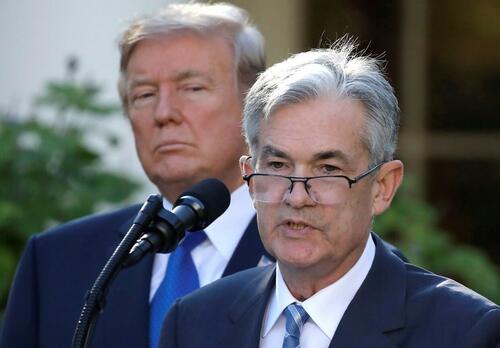Central Banks Will Prioritize Government Spending Over Inflation In 2025
Independence of central banks has been under question for many years. However, the disappearance of “higher for longer” in 2024 erased any doubt about the monetary authorities’ lack of independence.
The Federal Reserve panicked in June 2024 and decided to delay the normalization of its balance sheet, coinciding with a period of massive deficit spending and Treasury debt issuance at elevated rates.
The Federal Reserve proceeded to implement an unnecessary 50 basis point rate cut during a period when financial conditions were at their loosest in years, growth was allegedly robust, and employment was solid, according to the Fed, but inflation remained above target.
It was not only the Fed. The ECB has been more dovish than any other central bank, apart from the Bank of Japan, despite stubbornly elevated inflation rates in many of the eurozone countries. The ECB has kept the “anti-fragmentation” tool and all its liquidity measures and incentivized France, Spain, and others to continue bloating government debt.
Given the lack of evidence of sustainable disinflation, especially in the second half of 2024, central banks should not have initiated an easing cycle. It was clear that central banks had one priority: keeping the government debt bubble alive.
The situation will remain unchanged in 2025. It’s important to keep in mind that in 2024, elections took place in over 70 nations, leading to a significant increase in government spending. Central banks will prefer to maintain government debt costs stable rather than to combat inflation in a year in which many emerging economies face a large maturity wall of dollar-denominated debt issued during the pandemic spending spree.
Furthermore, according to SP Global, global debt maturities will rise from nearly $2 trillion in 2024 to a peak of $2.78 trillion in 2026. The FT reports that the average annual rollover of existing global debt is nearly $50tn.
What does this mean for investors? Central banks will inject as much liquidity as needed to avoid a reckoning moment, especially for sovereign issuers. Central banks will prefer zombification and stagflation to a sovereign debt cost burst. And what does “liquidity” mean? Money supply growth.
Governments print money through massive deficit spending, and central banks must ease their policies to avoid a slump in asset prices, which means abandoning their long-forgotten target of price stability. This means that markets cannot accept 4–5% annual money supply growth. By now, in an economy that grows only 2.5%, “liquidity” needs to rise at least eight percent. Simultaneously, the risk associated with Treasury issuances increases and the foreign demand for US government bonds decreases, thereby limiting the central bank’s ability to conceal fiscal policy imbalances and federal insolvency. Powell may say what he wants about being “data dependent,” because the only data they depend on is the supply of new debt and the yield it demands.
The central banks set price stability as their target precisely to limit governments’ endless appetite for monetary destruction. However, independence vanished when central banks abandoned or ignored price stability, blaming inflation on various absurdities instead of government spending and money supply growth.
Yellen’s inclination toward short-term borrowing strategies will come back to haunt the Fed in 2025-2026. Though disinflation showed some promise earlier in the year, its stalling after June highlights the persistence of inflationism, often veiled by hollow hawkish promises. The Fed will not fight the government. It will pass the bill to consumers.
Yes, 2024 was a year of insane government spending. In 2025, central banks will have to handle most of the government debt maturities from 2020’s insane spending spree, along with the short-term borrowing maturities that Yellen has favoured. This means that central banks will likely increase their balance sheets, and global liquidity will soar again. In 2024, global money supply rose $1.6 trillion, and disinflation stalled after June. Inflationism is not back; it never left. It was only disguised by empty promises.
Tyler Durden
Mon, 12/23/2024 – 10:45


